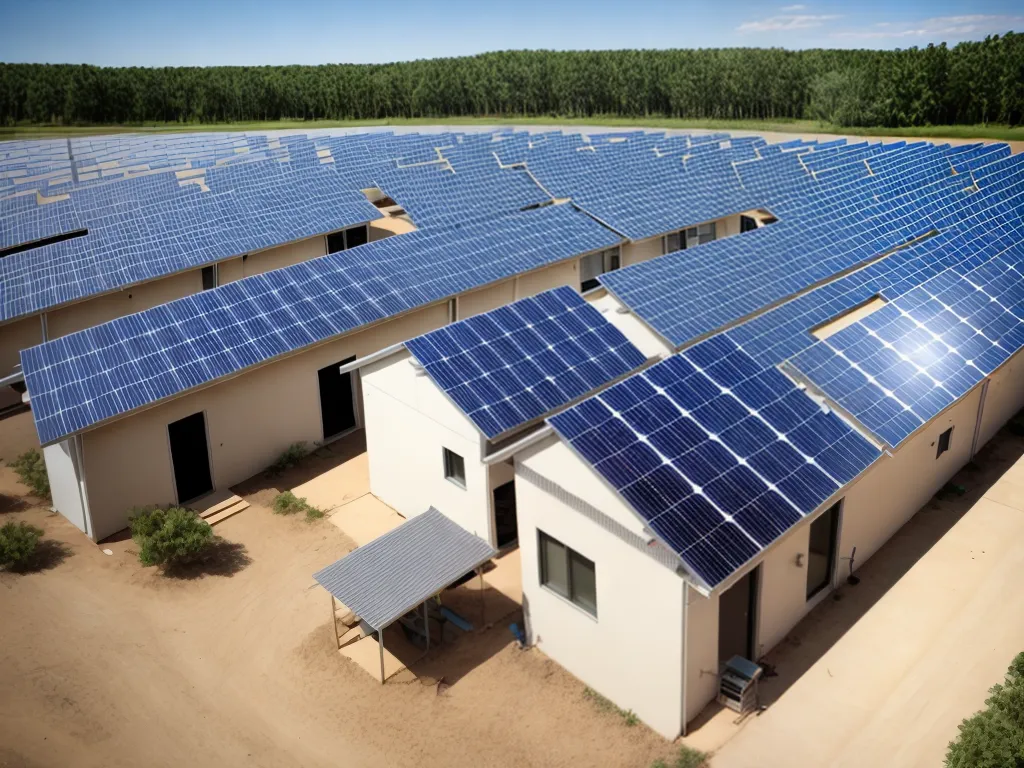
Installing solar panels on your home can reduce your dependence on the electric grid and lower your monthly utility bills. However, there are some hidden costs to consider before making the switch to small-scale solar power. Understanding these expenses can help you budget properly and decide if solar is truly cost-effective for your situation.
Upfront System Costs
The most obvious cost of going solar is the upfront expense of purchasing and installing the solar panel system. This includes:
- Solar panels - The main component that absorbs sunlight and converts it into electricity.
- Inverters - Devices that convert the solar panel's DC output into usable AC power.
- Mounting equipment - Racks, stands, and mounts to securely affix panels to your roof or ground.
- Wiring and electrical components - Cables, conduits, and junction boxes to connect and control the system.
- Permits and inspection fees - Costs to obtain required permits and pass inspections.
- Installation labor - Fees to have a qualified solar contractor properly install the system.
For a small 5 kW system, expect to pay $15,000 to $25,000 in upfront costs depending on your location and other factors. Larger systems can cost over $40,000.
Lost Investment Incentives
The federal solar tax credit provides a 26% tax credit for systems installed in 2022, which drops to 22% in 2023. This can save thousands on installation costs. However, once the credit expires, you may lose out on this valuable investment incentive.
Additionally, utilities in some states offer rebates and performance-based incentives to help offset upfront solar costs. Like the federal tax credit, the availability and value of state and utility incentives are declining over time. Locking them in now can maximize your cost savings.
Panel Efficiency Reduction
Solar panels lose efficiency slowly over time, at a rate of around 0.5% to 1% per year. After 25 years, a solar panel may operate at 80% of its original efficiency. To maintain optimal production, you may need to replace solar panels earlier than expected.
Inverter Replacement
While solar panels can last 25-30 years, most inverters need replacement after 10-15 years. Inverter replacement costs can be $500 to $3,000 depending on system size.
Roof Replacement Costs
If solar panels are leased rather than purchased, replacing your roof can be challenging and expensive. Most solar leases place requirements on roof conditions and alterations. Before re-roofing, you often must pay unanticipated costs for solar panel removal and re-installation.
Panel Damage From Weather Events
Hail, heavy winds, snow, and debris can damage solar panels, requiring repair or replacement costs not covered by homeowners insurance policies. Inspecting and maintaining panels is essential to prevent weather-related damage.
Costly Power Conversion Systems
For off-grid solar systems, batteries are needed to store power, which adds significant cost. Battery banks for whole-home backup can cost $10,000 or more. These large battery banks may need replacement every 5-10 years, for thousands in repeated expenses.
Utility Costs and Fees
While solar panels reduce energy consumption from the grid, you will still have a connection to the utility to draw power when solar can’t meet demands. Utilities charge monthly connection fees, grid access fees, and other charges that cannot be avoided.
Net metering policies, which credit excess solar energy back to your utility bill, are being phased out in many areas. This can drastically reduce the bill savings from solar.
Declining Home Value
Some studies show homes with leased solar panels may have lower resale value, as the lease is viewed as a liability or encumbrance. The new owner must assume the lease if they want to keep the panels. Owned systems add value, but leased systems can detract value.
Cost Comparisons
While solar power can generate long-term savings, it’s important to weigh the upfront costs against the energy bill reductions. Consider both current and estimated future energy costs with and without solar to determine actual cost effectiveness.
On average, the payback period for solar power is 6-12 years. Upfront solar expenses often do not generate net savings for 10 years or longer. Carefully evaluate your investment return expectations before deciding if solar power’s hidden costs are worth it.